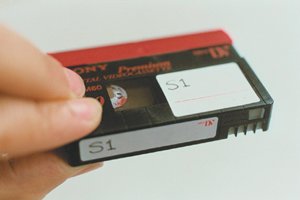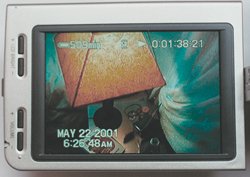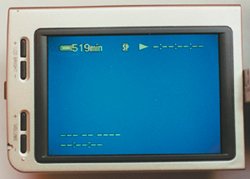Organizing Your Video
| Following the most basic rules of organization will make everything else you do in video streamlined and manageable. Nothing is worse than knowing you shot something important but being utterly stumped when you try to find it. Not remembering what tape has that perfect sunrise shot, for instance, or shuttling aimlessly back and forth between tapes trying to guess, is enough to keep anyone from enjoying the process. Label your tapes. Period. There is no substitute for this rule. Label them and, after they are shot, sit down for an enjoyable romp watching them. While watching, make notes about what's on the tape using a paper log sheet, one for each videocassette. Labeling your cassettes and keeping log sheets is important if you ever hope to find material you shoot. Right after you buy a digital videocassette, take it out of the wrapper, put the enclosed blank label on the cassette, and number itstarting with 1 and counting from there. You can add other info if you'd like, but the unique tape number is critical. You don't want three cassettes labeled 24. Tip You could use just a number (1, 2, 3...), but if you plan on doing lots of video editing, you may want to differentiate between the tapes you shoot in your camera and the tapes onto which you record finished video from your Mac. In that case, use a letter before the number: S for a tape you shoot and F for a tape containing final video. (Alternately, you could pick any logical letters; professionals use M for the master tape that final videos go onto.) Then print out a blank tape log sheet (a version is online at www.nonlinear.info/dv/log.pdf) and write the tape number at the top and information about what's on the tape below. If you keep all your tape log sheets together in a folder or binder, you'll never lose track of a great shotand even if you never edit your tapes, you'll be able to grab one on a whim and watch something you know you'll enjoy. Without this organization strategy, in no time you'll have a dusty box of unlabeled or poorly identified cassettes with nary a clue as to what's on most of them. Good tape-logging style Tip The numbers that keep track of the frames on a videotape are called timecode and are important in keeping accurate log sheets. If no number is already on the tape when you start recording, the camera starts at 00 and adds numbers while you shoot. Then the number increases incrementally, 30 frames every second, ultimately counting seconds, minutes, and hours. Timecode is almost always presented in the upper-right corner of your camera's view screen. Camcorders can turn the display of the timecode on or off, but even if you can't see it, every frame has a number. As you get more comfortable with video and your camcorder, you will learn how to keep that number from ever jumping back to 00 in the middle of a tape. If you can keep this timecode continuous, ascending, and unbroken for an entire tape, a world of easy organization opens up to you. You can work without timecode, but if you do lots of video, it's a valuable reference, allowing you to jot down the number on your log sheet along with a description of the shot. It will greatly help you find shots quickly. For more information on video organization, check out The Little Digital Video Book (Peachpit Press, 2001). |
EAN: 2147483647
Pages: 142



